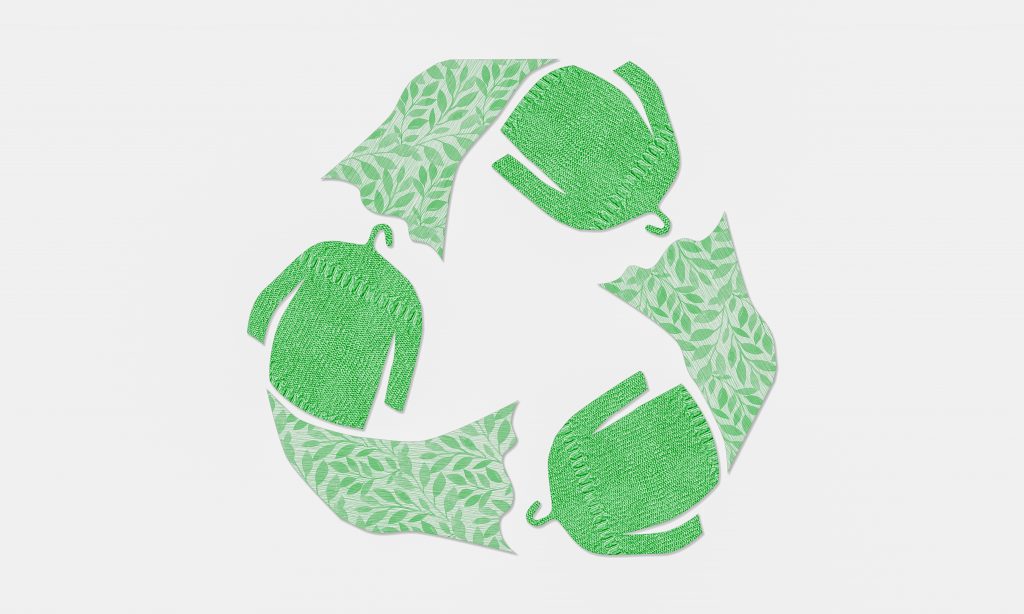How Cape Town Sustainable Fashion is Forming Eco-Conscious Purchasing
How Cape Town Sustainable Fashion is Forming Eco-Conscious Purchasing
Blog Article
Remain Ahead of the Curve by Exploring Innovative Fashion Trends
In a sector as dynamic as fashion, remaining ahead entails more than just complying with current patterns-- it requires an expedition of advancement. The merging of modern technology and style advertises a new age of consumer involvement.

Embracing Smart Textiles
In recent times, the fashion business has witnessed a transformative shift with the integration of clever fabrics, an advanced innovation that mixes innovation with material. This advancement represents not only a fusion of aesthetic appeals and capability but also a significant leap in the direction of sustainability and customization in vogue. Smart textiles, likewise understood as e-textiles, embed innovative electronics such as sensors and conductive threads within the material, enabling garments to interact with the environment or the user.
These textiles are developed to keep an eye on physiological criteria, such as heart rate or body temperature, providing real-time health and wellness analytics. Past wellness applications, smart textiles are additionally being made use of for adaptive clothing, which can alter color or pattern in feedback to environmental stimuli, thus offering a dynamic style experience.
Moreover, the advancement of energy-harvesting fabrics that generate power from motion or sunlight is leading the way for self-dependent wearable modern technology. This technology is appealing to ecologically conscious customers and developers intending to decrease the environmental impact of fashion. As study and advancement in this area development, wise textiles are expected to come to be increasingly prevalent, improving the landscape of modern style with their multifunctional capacities.
The Increase of 3D Printing
Changing the manufacturing landscape, 3D printing has actually arised as a game-changer in the garment industry. This sophisticated innovation has allowed developers to push the boundaries of creative thinking, creating detailed and tailored garments that were formerly inconceivable. By leveraging electronic layout and additive production, 3D printing promotes the creation of complex geometries and patterns, allowing developers to explore brand-new textures and frameworks.
A remarkable benefit of 3D printing in style is its ability to produce on-demand, decreasing waste and decreasing inventory needs. This performance not only optimizes production procedures but also allows for quick prototyping, allowing designers to bring their visions to life in a shorter duration. Moreover, 3D printing supports customization to a degree unmatched by standard approaches, supplying special designs and individualized fits customized to specific consumer choices.
The surge of 3D printing has likewise equalized fashion, making it accessible to emerging developers that can now produce top notch items without substantial economic investment in traditional production facilities. As technology remains to advance, the fashion sector is poised to harness the complete potential of 3D printing, exploring brand-new products and methods that will definitely redefine exactly how fashion is conceived and generated.
Lasting Style Technologies
As the fashion business faces the pressing demand for ecological duty, lasting style developments have emerged at the forefront of transformative change. The growing understanding of ecological impact has actually sustained a shift towards even more eco-conscious methods and materials. Brand names and developers are now prioritizing sustainability, including methods that decrease waste and lower carbon footprints.
One considerable development is the increase of round fashion, which stresses recycling and upcycling to extend the lifecycle of garments. This strategy not only reduces waste but also encourages consumers to adopt a much more conscious technique to garments consumption.
An additional breakthrough exists in the adoption of ingenious dyeing strategies that use all-natural dyes or waterless processes, consequently reducing the vast quantities of water and chemicals traditionally utilized in textile dyeing. Furthermore, developments in biotechnology have led to the production of lab-grown leather and materials, providing ecologically pleasant and cruelty-free alternatives to standard products. Through these pioneering initiatives, the apparel industry is making meaningful strides in the direction of a much more sustainable future.

Tech-Integrated Garments
Tech-integrated garments represents an innovative fusion of fashion and modern technology, reshaping just how individuals engage with their apparel. This ingenious domain is marked by the incorporation of wise textiles and embedded digital elements, enhancing both functionality and aesthetic appeal. From fitness trackers embedded in sports apparel to warmed coats regulated via smartphone apps, tech-integrated apparel offers consumers unprecedented ease and versatility.
Pioneering brand names are driving this pattern, concentrating on producing garments that reply to ecological stimulations or user commands. For example, some garments can alter color or pattern in reaction to temperature shifts, while others incorporate biometric sensing units to check health and wellness metrics like heart price or stress degrees. The seamless assimilation of modern technology into fabrics additionally reaches ecological sustainability, with initiatives to develop self-cleaning textiles or garments that adapt to weather, hence reducing the demand for click over here now multiple layers.
Furthermore, the arrival of wearable modern technology is not just limited to clothes yet encompasses accessories like watches and glasses, further widening the extent of tech-integrated fashion. As the market remains to introduce, the capacity for modification and customization in garments grows, providing consumers special, tech-enhanced style experiences that satisfy their private demands and choices.
Future of Virtual Fashion
In recent times, the future of digital style has become a transformative force within the market, leveraging developments in electronic technology to redefine exactly how fashion is developed, experienced, and taken in. By incorporating augmented fact (AR), virtual fact (VIRTUAL REALITY), and 3D layout tools, developers can now craft interactive and immersive experiences that go beyond standard fashion borders. Digital fashion enables the production of garments that exist solely in electronic settings, supplying endless possibilities for development without the restrictions of physical production.
This electronic shift not only presents chances for innovative expression yet also addresses sustainability problems integral in standard fashion techniques. Cape Town Sustainable Fashion. By eliminating the need for physical resources, virtual style lowers waste and lessens carbon footprints. Additionally, the increase of online style lines up with the raising customer demand for special and individualized experiences, as online garments can be customized and tailored to individual choices effortlessly

Verdict
The style sector's future hinge on the combination of innovative modern technologies and lasting techniques - Cape Town Sustainable Fashion. Smart textiles and tech-integrated garments are improving functionality, while 3D printing supplies chances for modification and waste Homepage decrease. Lasting style, through environment-friendly products and circular approaches, shows a commitment to ecological stewardship. Moreover, online fashion is poised to redefine customer communications. Adapting to these patterns is crucial for brands looking for to remain affordable and appropriate in this swiftly developing landscape.
In recent years, the style industry has observed a transformative change with the assimilation of wise fabrics, a sophisticated development that mixes technology with material.As the fashion sector grapples with the pressing demand for environmental responsibility, lasting fashion advancements have arised at the center of transformative adjustment.In recent years, the future of online style has arised as a transformative pressure within the industry, leveraging developments in digital technology to redefine how fashion is created, experienced, and taken in. The increase of online style lines up find more information with the boosting consumer demand for individualized and one-of-a-kind experiences, as digital garments can be tailored and tailored to private choices with convenience.
The fashion industry's future lies in the integration of cutting-edge modern technologies and lasting methods.
Report this page